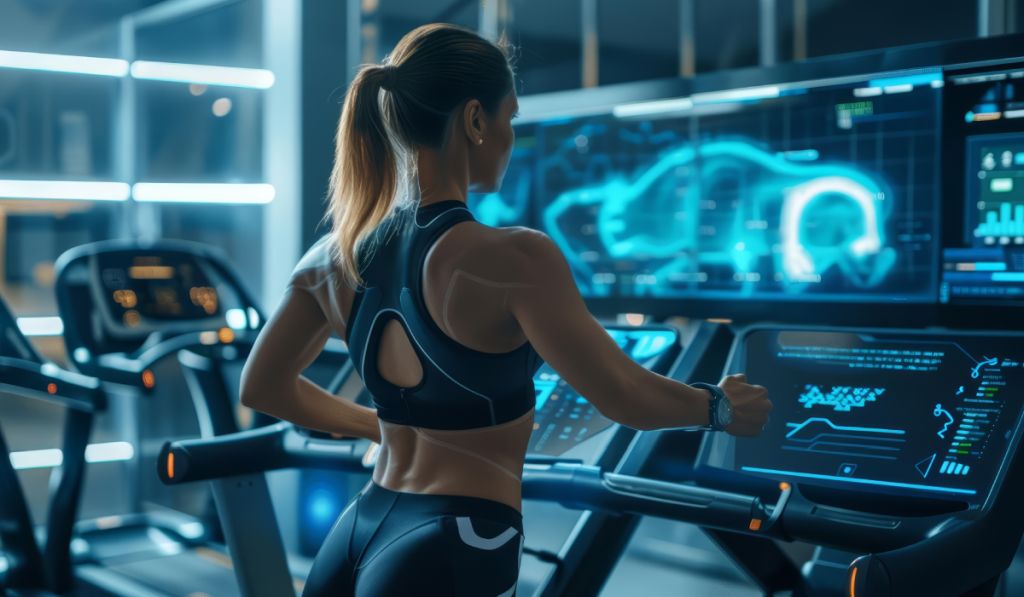How Technology Shapes the Future of Health and Fitness?

Fitness is no longer focused on simple routines and traditional gyms. With improvements in technology, nowadays, the fitness environment is becoming more personalized, efficient, and data driven.
From immersive VR experiences to wearable tech and AI-powered exercises, technology is reshaping how we achieve and monitor fitness goals. Fitness technology involves everything from virtual reality and artificial intelligence to immersive VR experiences, wea, able health trackers, and biohacking tools that boost wellness to new heights.
Considering more individuals are looking for tailored solutions to optimize their health, the fitness industry is increasingly incorporating technology to make exercise more effective, convenient, and accessible.
AI-driven Workouts
These days, AI has enabled us to do workouts that are highly personalized, adapting to each person’s unique fitness progress, goals, and levels. These types of platforms can analyze user data, provide real-time feedback, adjust intensity levels, and recommend specific exercises.
For instance, apps like Freeletics design custom training plans, while Carol Bike uses AI to create interval training for users. The role of AI is to maximize the user’s time and accomplish results faster.
Wearable Gadgets
Items like the Qura Ring, Whoop, and Apple Watch have transformed personal fitness. They have provided users with insights into their sleep quality, daily activities, and overall wellness. These devices allow us to track our fitness goals, make proper adjustments, and monitor progress. With features like sleep tracking and heart rate monitoring, wearable gadgets have become a crucial tool for health-conscious individuals who want to maintain a balanced lifestyle.
Biohacking Tools
Tools like hyperbaric oxygen chambers, infrared saunas, and cryotherapy chambers offer innovative ways to enhance performance and boost recovery. Cryotherapy, for example, exposes our body to sub-zero temperatures to promote faster recovery and reduce inflammation.
On the other hand, infrared sauna helps with detoxification and relaxation. Devices such as vibration plates and compression boots further help with improving blood circulation and muscle soreness and speeding up recovery time, making it easier for people to stay consistent with their workout routine.

VR and AR in Fitness
These two areas have introduced a new dimension to fitness, providing users with immersive workout experience that keeps them engaged. Companies like Mirror and Peloton offer virtual environments where people can participate in live-streamed classes, connect with other virtual trainees, and track progress. VR workouts transform training into interactive exercises, making it accessible and fun to a wider audience.
New Approaches in Medicine
Recently, new approaches in medicine which include the use of peptides have emerged and people have started using them to improve various health conditions. Among them is aod 9604, designed to regulate health and boost metabolism. If you have ever thought about some alternative approaches and want to accomplish faster results, then you can buy aod 9604 and test the performance of this peptide.
Virtual Classes and Remote Coaching
Nowadays, plenty of digital fitness platforms have become increasingly popular among the general public, mostly because they offer flexibility and access to guided workouts from home. Users can also explore the benefits of personalized coaching, receive feedback in real time, and adjust their routines. Remote coaching makes professional fitness accessible to a large number of people, eliminating scheduling or location.
Benefits of Fitness Technology
Fitness technology provides numerous benefits, boosting every stage of your workout process, from recovery to motivation.
Adaptability and Personalization
AI-generated fitness plans are designed to adapt to each person’s needs, making them more effective and efficient. These customized routines consider users’ personal schedules, fitness goals, and physical abilities, making sure they receive maximum benefits.
Increased efficiency
Fitness technology has enabled individuals to accomplish their goals in less time. Tools like Carol Bike, for instance, offer highly effective training in just a couple of minutes, making it easier for busy individuals to include fitness in their daily activities.
Better Motivation and Engagement
Technology has affected the way we stay motivated, with apps and wearables offering goal-setting features, such as progress tracking and real-time feedback. Gamification elements like achievements and leaderboards make workouts more enjoyable and encourage people to stay consistent.
